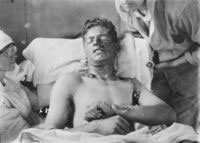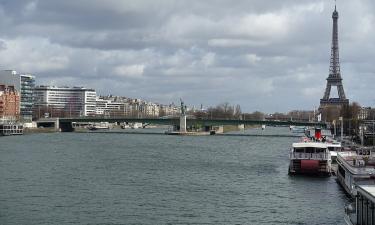US Army using yperite in 'wars for democracy' follows Nazi Germany tactics
Eye-witnesses say that one of the most modern kinds of chemical weapons actually burns human bodies and dissolves bones. The Pentagon using such agents in its recent ‘wars for democracy’ is far ahead of Germans who tested yperite ninety years ago.

Two weeks ago, mankind celebrated one of the most tragic jubilees in history. On the night of July 13, 1917 during WWI the German army was the first to use yperite, also known as mustard gas, as a chemical agent.
It was already in 1925 that the Geneva Protocol banned usage of chemical weapons, and the document was ratified by over one hundred of countries. However, development of chemical weapons is still carried out. Some countries are working on weapons of mass destruction that work thanks to the toxic characteristics of chemical substances. Chemical agents and chemical ammunition are the basic components of chemical weapons.
The first instance of application of toxic and chocking gases against inimical forces was during the war between Athenians and Spartans in 431-404 B.C. when during the siege of Plataea and Delium Spartans soaked wood in tar and sulfur and then burnt it under the walls of the two towns. The history of Middle Ages mentions the prototypes of modern chocking shells that were dropped with the help of syringes or in bottles the way hand grenades are dropped.
The idea of starting a gas attack was suggested by English admiral Lord Dundonald during the Crimea campaign in 1855. In a memorandum of August 7, 1855 the lord suggested seizure of the city of Sevastopol with sulfur vapour.
The usage of toxic gases during WWI dates from April 22, 1915 when Germans started their first gas attack with chlorine cylinders.
Fritz Haber was one of the pioneers of chemical warfare of the 20th century. Before WWI, he was at head of Berlin’s Institute of Physical Chemistry. He carefully studied books and manuals on chemistry even when was sent to the front. Being a consultant of the German Defense Department, Haber was commissioned to develop a poisoning irritant agent that could force inimical soldiers out of trenches.
In several months, Haber and his colleagues created weapons using chlorine gas that was put into production in January 1915. Part of the Russian army that blocked the Germans’ way to Warsaw was the first to experience a chemical attack of the new weapons. The troops saw a greenish cloud produced by the weapons and believed it was just a disguise of an attack. So, the Russian army reinforced the vanguard trenches and brought support forces up to the place. Soon, the vanguard trenches were full with dead soldiers and more other dying.
During WWI, the confronting armies used 125,000 tons of toxic agents that killed800,000 people. Adamsit , lewisite and azotic yperites were created at the end of the war.
The neuroparalytic poison gases sarin, soman and tabun were created in the 1940s, later VX gases appeared. During WWII, Hitler’s army did not dare to apply chemical weapons as it was afraid of being requited. After WWII, poison gases were widely used in local conflicts.
During the operations in Korea, the US Army used poison gases against the Korean and Chinese troops as well as against peaceful population of both countries and prisoners of war. According to incomplete data, within the period from February 27, 1952 to the end of June 1953 American and South Korean armies used chemical weapons and bombs against Korean troops more than one hundred of times. As a result, over one thousand of people got poisoned and 145 of them died. The highest amount of chemical weapons was dropped on Chinese troops on May 1, 1952.
Over the first part of 1966 American airplanes dropped more than 1 million 300 thousand of gallons of toxic gas on the territory of some 21,000 hectares in South Vietnam.
US President Kennedy sanctioned use of chemicals by the US forces to liquidate vegetation in South Vietnam in August 1961. Herbicides were spread over the entire territory of South Vietnam, from the demilitarized zone to the delta of the Mekong River, also over many districts of Laos and Kampuchea. Chemicals were used everywhere where Americans supposed presence of inimical troops. Many of the regions are still poisoned today. Lawyers of victims of the terrible poisoning have recently brought suits against the US Administration.
The massive use of chemical weapons finally made the world realize they were terribly fatal. In the 1970s, almost all countries signed the Chemical Weapons Convention.
However, some countries do not hesitate to use such cheap and effective weapons to force opponents to kneel. Let us take, for example, Iraq where Americans during their last campaign once again used white phosphorus against civilians of Fallujah despite of the fact that the substance is prohibited by the UN Convention in 1980.
A military man who participated in the operation confessed that the army was ordered to be extremely cautious while spreading the chemical agent as it was hard for putting out. Phosphorus can burn human bodies; it dissolves flesh and bones and liquidates all living creatures within a radius of 150 meters off the center of its explosion.
The tragic jubilee of the first use of yperite is just a good chance for mankind to keep it in mind that people themselves are making weapons and instruments for self-liquidation.
Vladimir Anokhin
Translated by Maria Gousseva
Pravda.ru
Subscribe to Pravda.Ru Telegram channel, Facebook, RSS!





